Anyone who has ever read the sensational “Chariots of the Gods” or seen numerous shows about aliens, archeology, or strange occurrences is likely aware of the mysterious Nasca Lines. These marks on a coastal plain not far from the city of Ica in the Paracas region of Peru have intrigued people for centuries. Imagine typical petroglyphs from pre-historic times that were carved onto a rock wall and enlarge them to football-field size. These are the giant Nasca (Nazca) geoglyphs of the San Jose Plains.

Most of these geoglyphs were created between 200-650AD although discoveries are going on in the area that date back another 600 years. They are many theories as to why they were created. Some believe because they are large enough to be seen from space, they were designed for a god known to fly. I’m not one of the ethereal class or an astronaut, but with access to a plane the decision to overfly the lines for a look was an easy one.
Paracas has a small airport that was being expanded to handle international flights (likely completed as our visit was several years ago). Tours to the Nasca Lines in a Cessna 172 (holds 4 people) or Cessna Grand Caravan (8 plus 2 pilots) fly tourists over the lines. The 172 offered a longer view over particular glyphs, but it also added an extra hour of flight time to the lines. We opted for the faster Caravan and piled into a vehicle with other tourists to haul us past airport construction and out to the plane.

The airport sits inland, although close to the ocean. After takeoff, we had a clear view of a beach resort that sits along the edge of the dry desert region. In 2007 this resort was destroyed by a 7.9 earthquake with an epicenter not far offshore, then rebuilt from the ground up years later.
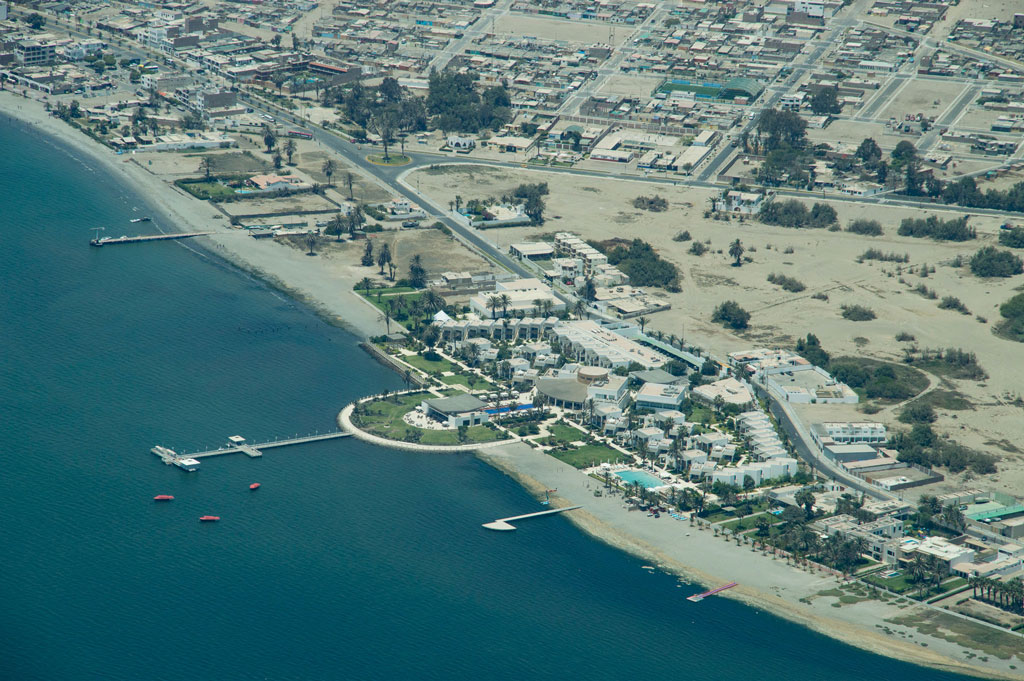
Today, this part of Peru, while near the ocean, is extremely dry. In the historic past, the area where we see the Nasca Lines was covered with a deep-rooted tree that collected its water from deep below ground. The early civilizations stripped much of the land. Without trees to moderate the climate and buffer the weather, a few El Nino events are believed to have wiped them out. This idea has been reinforced as archaeologists have learned that many of the Nasca formations are related to storing and recharging water into aquifers from rain events.
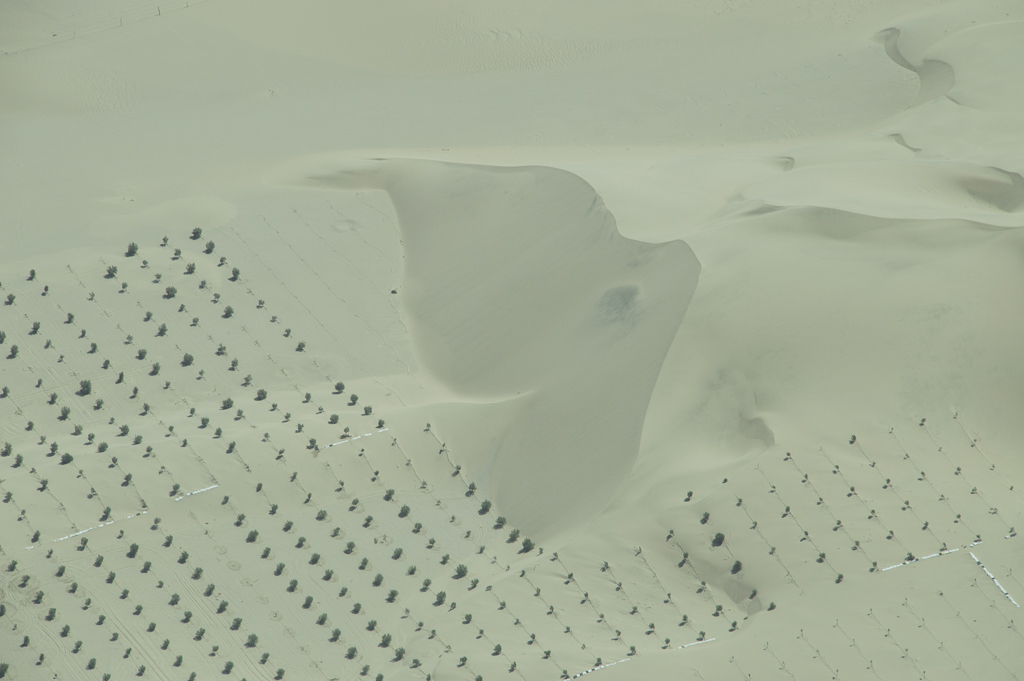
A rim of mountains surround part of the plain. We started on one side and worked across the plain. The first things to appear were the multitude of lines, trapezoids, and angles carved into the flat part of the landscape in the distance.
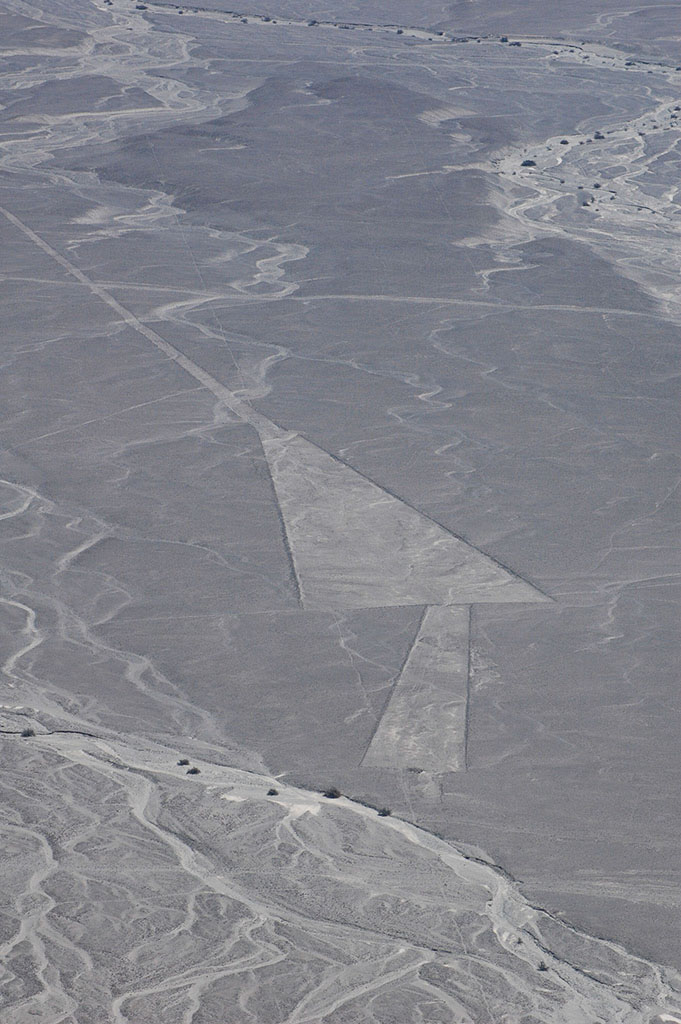
Some trapezoids converged on small hills where is it believed the early people held religious ceremonies. Below is a set of photos showing how the smaller ends of the trapezoids split apart as they reached a hill.
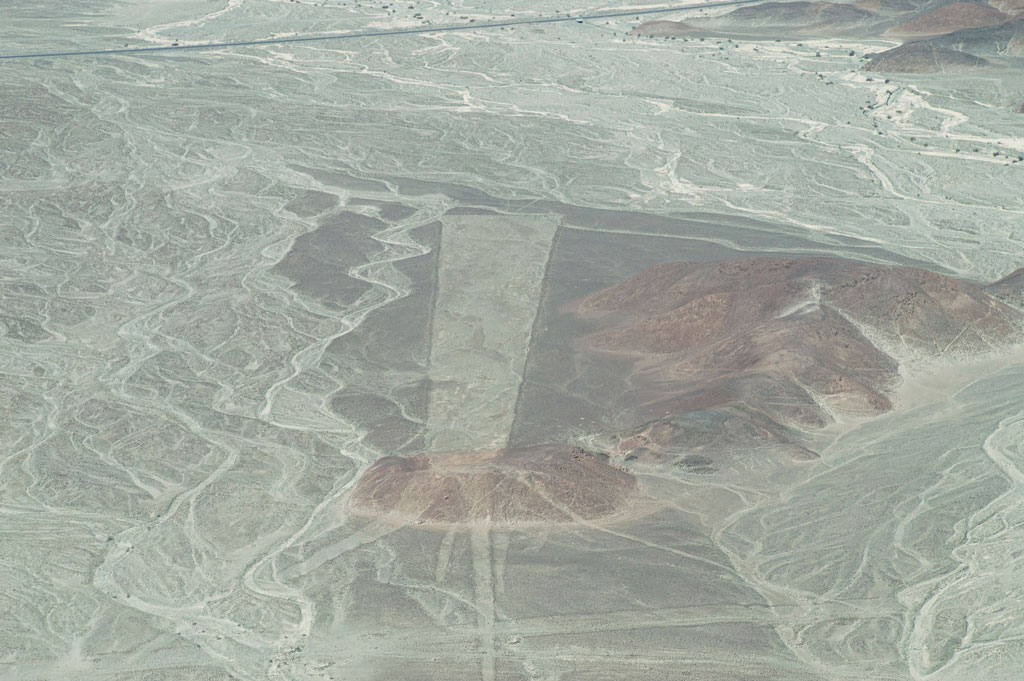
The first of the figures we looked at was the famous “Astronaut” or “Owl-headed man.” It stands about 70 feet high. Scientists say he is holding a scepter but it doesn’t show well in this photo. This glyph was a departure from the norm in the area as the others were laid out on the plain.

The national bird of Peru is the condor. This particular figure is one of the older and iconic geoglyphs on the plain. The condor was considered one of the principle deities of these people. Just as the bird is huge, so is the glyph at 136 meters or about 450feet (90 feet longer than a football field). It has also been highly damaged as future generations carved lines over and around the condor. Several of those lines emanated from a small hill close by that can be seen in the upper left corner.
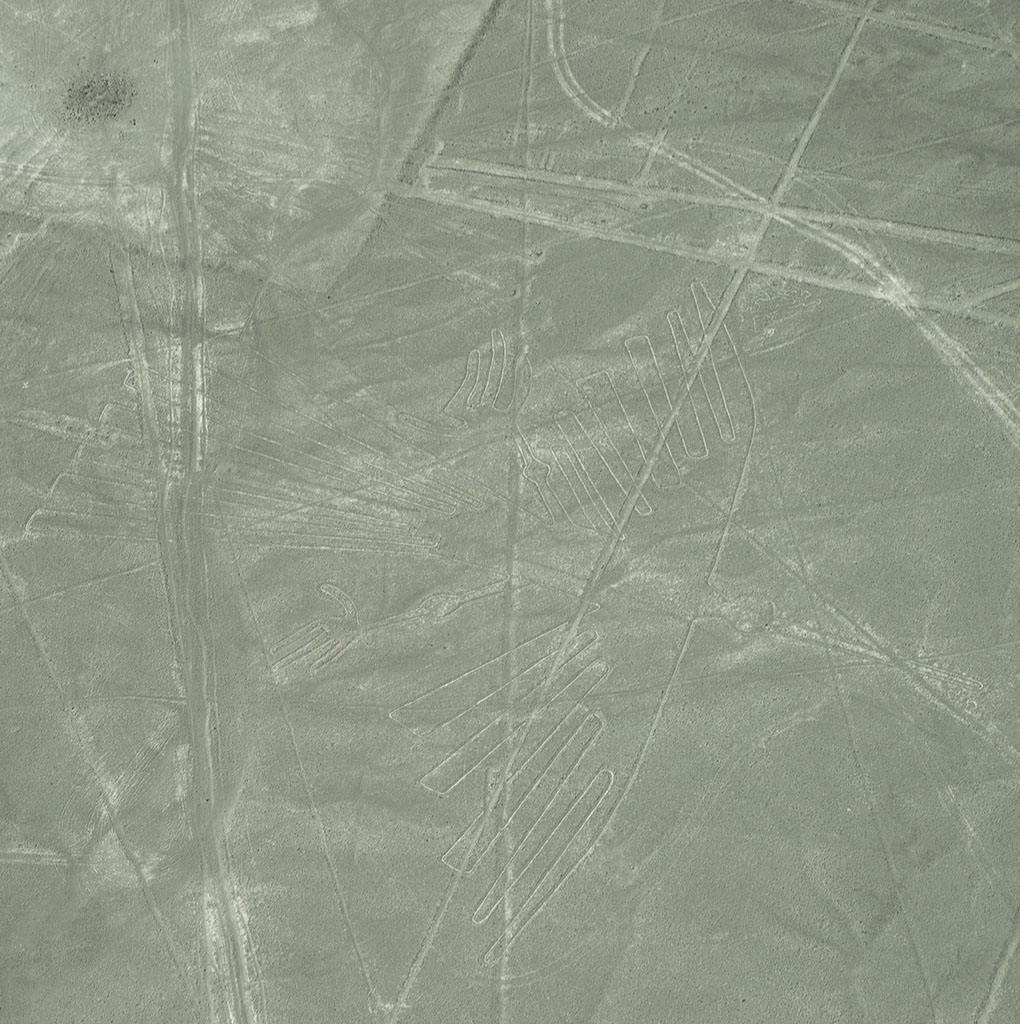
This next figure features man’s best friend (or possibly a fox). The Peruvian hairless dog has been around for thousands of years. Some believe it represents fidelity.

Check out “More Creatures of Nasca Part II” to see other famous geoglyphs. Also learn how a Greenpeace publicity stunt damaged the Nasca plains, but the Peruvians used the event to further their explorations.

Leave a Reply